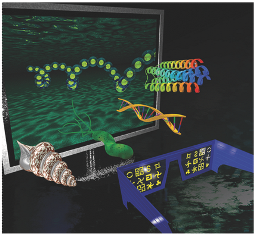|
PhD positions
Digital harmony: discovering new photonic effects by confining photons, electrons and magnetism at the nanoscale Deadline: Applications accepted all year round. Weblink: here. About the Project: The University of Bath is inviting applications for the following PhD project commencing in October 2022 under the supervision of Prof Ventsislav Valev in the Department of Physics. Eligible applicants will be considered for a fully-funded studentship – for more information, see the Funding Notes section below. Overview of the Project: “When you use new technology, new things are bound to happen!” said Nicolaas Bloembergen (Physics Nobel Prize 1981, for his work in non-linear optics). When intense laser light of a certain frequency f shines on materials, these materials can produce discrete harmonics (light at frequencies 2f, 3f, 4f, etc.). In 1979, it was theoretically predicted that upon illuminating a chiral (twisted) nanoparticle or molecule with circularly polarized light, the intensity of light scattered at such harmonics should depend on the chirality (twist) of the scatterers. This effect is referred to as chiroptical harmonic scattering (CHRS). However, for 40 years experimental evidence for CHRS remained elusive. Scientists speculated that the effect might be too weak for detection or that there was another effect at work that prevented observation. In 2019, our teams was the first to finally report the experimental observation of CHRS.[1] Key for our success were the use of a highly sensitive equipment, our team’s perseverance and the choice of materials. The 2019 work opened up a scientific field that this PhD project aims to explore; the field is brand new and rich in exciting research possibilities. As illustrations, we have recently published a series of papers on various new aspects of CHRS.[2-4] Many big questions remain unanswered. For instance, this PhD project will seek to demonstrate for the first time CHRS at the fourth harmonic (4f) frequency of light. The student will then build a single laser rig to measure simultaneously CHRS at the second, third and fourth harmonic frequencies, thereby constructing the first digital harmonic analytical tool for chiral nano-materials. The work for this project will take place in a state-of-the-art ultrafast laser laboratory. We will also measure CHRS in materials, where it has never been shown before; especially those that are of interest for the industry, such as Si and Ge nanoparticles, high dielectric nanoparticles, plasmonic/dielectric nanoparticle hybrids, quantum dots, small molecules and even pharmaceutical molecules. CHRS is fast, occurs in tiny volumes of liquid and is remarkably sensitive. Consequently, this PhD project could have tremendous benefits for future, advanced nano-materials and for healthier pharmaceuticals. Project keywords: Photonics, plasmonics, nanophotonics, magnetism, optics, chirality, laser, spectroscopy, nonlinear, nanoscience, nanotechnology, digital. Candidate Requirements: Applicants should hold, or expect to receive, a First Class or good Upper Second Class Honours degree (or the equivalent). A master’s level qualification would also be advantageous. The successful candidate would have a strong interest in optics/photonics and a preference for experimental work. They would be enthusiastic about science and would enjoy learning new things. They will receive in depth training in advanced photonic techniques and microscopy, as well as in the practical choice of individual optical components for their work. Overall, the candidate is expected to develop as an independent experimental scientist and will be encouraged to attend national/international scientific conferences and training schools. Our research group is engaged in numerous outreach activities, such as visits to schools and participations in science festivals. An interest in communicating science to the public, robotics or digital art would be an advantage. Non-UK applicants must meet our English language entry requirement. Enquiries and Applications: Informal enquiries are welcomed and should be directed to Prof Ventsislav Valev (email v.k.valev@bath.ac.uk). Formal applications should be made via the University of Bath’s online application form for a PhD in Physics. More information about applying for a PhD at Bath may be found on our website. Equality, Diversity and Inclusion: We value a diverse research environment and aim to be an inclusive university, where difference is celebrated and respected. We welcome and encourage applications from under-represented groups. If you have circumstances that you feel we should be aware of that have affected your educational attainment, then please feel free to tell us about it in your application form. The best way to do this is a short paragraph at the end of your personal statement. Funding Notes: Self-Funded PhD Students Only. References:
|
